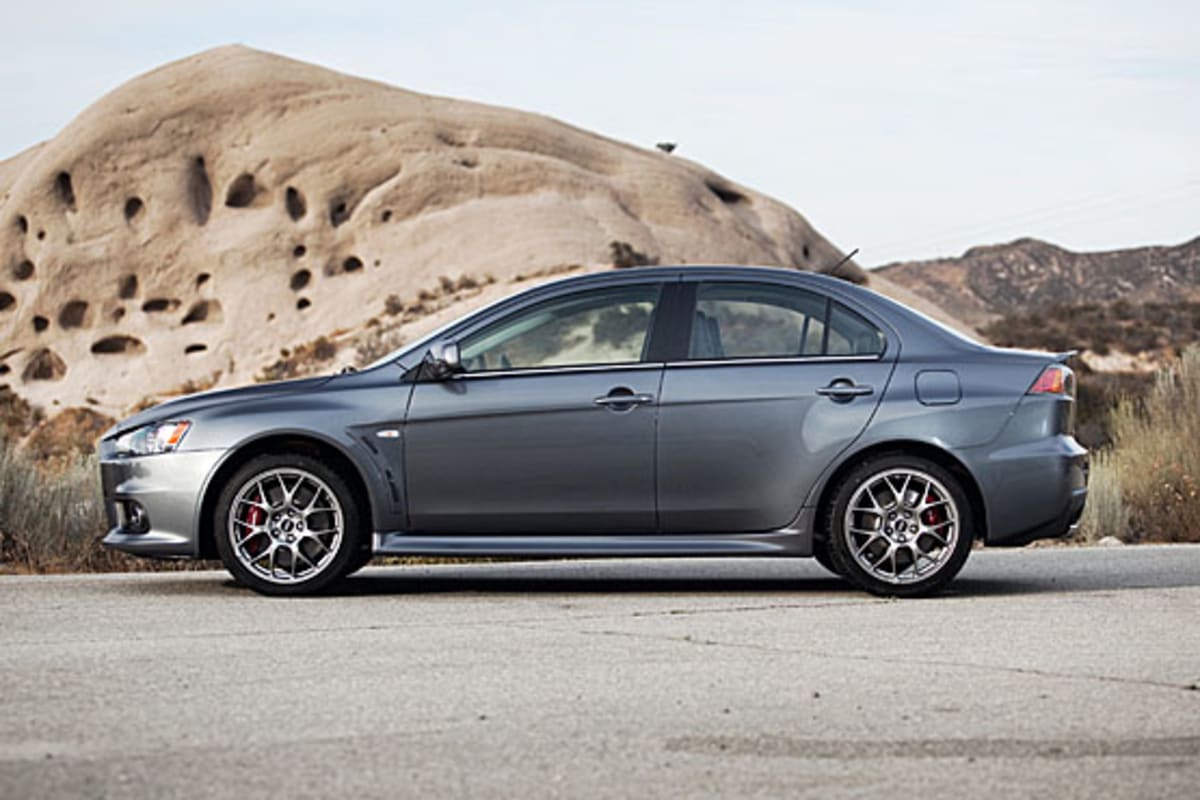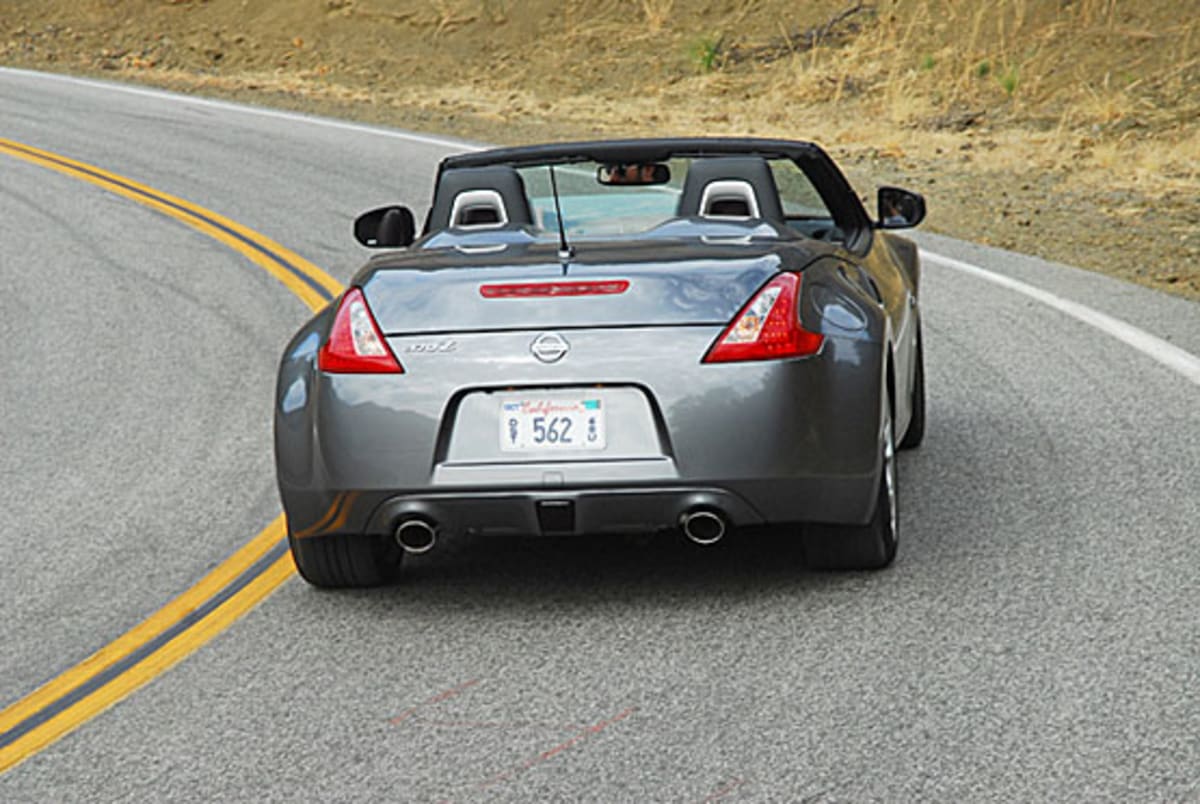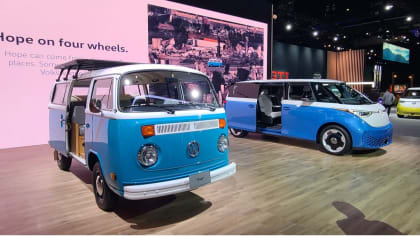THE BMW 328 TURNS 75
This article is from our archives and has not been updated and integrated with our "new" site yet... Even so, it's still awesome - so keep reading!
Published on Fri, May 13, 2011
By: The LACar Editorial Staff

No, not that BMW 328. The current 328i traces its lineage back to the E-21 3-Series introduced in 1975 and the 2002 introduced in the USA in 1968 before that. The 75-year old 328 is a roadster introduced in 1936. It was the most successful sports car of the 1930s on the racing scene. BMW’s Manfred Grunert writes about the iconic 328 below.
A HOT WIRE REPORT
Few cars can claim to hold as much fascination in the eyes of the public 75 years after their premiere as the BMW 328. Built between 1936 and 1940, the BMW 328 laid down a milestone in automotive history and was the most successful sports car of the 1930s on the racing scene. Agility, acceleration, reliability and lightweight construction – the BMW designers focused on the essentials in the development of the 328, ushering in a new era in the process. Indeed, at a time when powerful supercharged “Kompressor” machines ruled the racing roost, the BMW 328 Roadster – weighing just 780 kilograms and developing a modest 80 horsepower in series production form – was a genuine sensation. And sure enough, the new Roadster wasted no time in putting its burly supercharged rivals firmly in their place in its debut outing at the Nürburgring on June 14, 1936.
The BMW 328 combined a lightweight design, ideal weight distribution, aerodynamic lines, a well-designed engine and a meticulously tuned chassis to delivering superior roadholding for its day.
Having started life as a racing car mid-way through 1936, series production of the road-going BMW 328 began in spring 1937. On the road, its top speed of 155 km/h made it one of the quickest cars around. And, with only 464 examples ever made, the BMW 328 is today one of the most sought-after collector's items on the market.
The premiere of the BMW 328
The history of the BMW 328 got off to a rousing start. Eschewing the now traditional motor show premiere, the sports car was first introduced to an admiring public in an altogether feistier environment – namely the International Eifel Race at the Nürburgring on June 14, 1936. Only a handful of insiders were let in on the secret, a modest brochure released to this select inner circle in late 1935 revealing the existence of a new 2-litre sports car to be known henceforth under the designation “Typ 328”. The 328 was unveiled almost as an after-thought, without drum roll or glitzy presentation. It was left to its abilities on the road to prick the public consciousness.

An impressive debut
Sunday, June 14, 1936 – 34 runners were listed in the sports car category of the International Eifel Race. Seven of these were entered in the 2-litre class, and five were BMWs. Four were “Typ 319/1” cars, the other Ernst Jakob Henne's snow-white Roadster. The car stood out from the crowd, its body boasting far more flowing forms, a curved front end with a pair of slim, kidney-shaped air intakes similar to those of the BMW 326 presented at the Berlin Motor Show that spring, headlights integrated into the front wings, a low, sloping windscreen and a bulbous rear end. Out of sight, yet most certainly not out of mind after the car's lap times in practice, was the new engine lurking beneath the bonnet. The sound rumbling to the surface through the bonnet's two leather securing belts indicated the presence of a six-cylinder unit producing maybe 80 or even 90 horsepower.
As forecast, the pleasant conditions of practice day were usurped by rain and mist on Sunday. But that didn't deter 250,000 enthusiastic fans from flocking to the circuit to witness the most exciting race of the season. The new BMW 328 promptly put its rivals – some of them with much higher-output engines – to the sword, breaking the Nürburgring lap record for sports cars in the process. “For undiluted, top-class racing the International Eifel Race at the Nürburgring was the place to be,” trumpeted the daily press. “One of the most impressive results of the day was the victory of world record-breaking motorcycle rider Ernst Jakob Henne in the non-supercharged sports car class up to two litres. He even managed to set the fastest lap time of any sports car!” reported one paper. “Henne squeezed incredible performance out of his new 2-litre car,” added a stunned ‘Die Motorwelt'. “What magnificent acceleration! (...) this sports car is quicker than all its supercharged rivals! Henne takes the victory by a clear margin.”
Sustained success
And so the BMW 328 had taken its maiden victory in its debut outing at the Nürburgring. The win was to be followed by more than 200 others over a lifespan that lasted into the 1950s. It was a run of success unparalleled by any other model in its class; few other cars have left such an enduring impression on the company's motor sport history as the BMW 328 with its 2.0-litre straight-six engine.

The development of the BMW 328
When the foundations were laid for the construction of the BMW 328 in the early 1930s, the car's creators Rudolf Schleicher and Fritz Fiedler had little idea of the significance the sporty two-seater would one day attain. When Mssrs Schleicher and Fiedler conceived the BMW 328, there was no such thing as market research, a design department or a wind tunnel at BMW, never mind the electronic tools their counterparts take for granted today. Back then, designers were to be found huddled around drawing boards or in the testing workshop, using their hands to lend form to their ideas. If you were to single out one aspect of what makes the BMW 328 so special, it would be the coherence of the overall concept. The sports car was neither overly innovative for its time nor particularly powerful, yet its individual components – the drivetrain, body and chassis – came together to form a superior whole. And it remains a convincing, impressively resolved package today.
The drivetrain – making a good system better
Although the BMW 328 was developed on the basis of the BMW 319/1, it differed significantly in both its exterior appearance and under the skin. Indeed, the technical attributes of the new sports car combined to make the 319/1 “look rather old” when you compared them directly. The lack of resources for an all-new design meant that the BMW 328 had to make do with a modified version of the 50 hp engine from the BMW 326. The 2-litre grey cast iron block was given a new cylinder head (made from an aluminium alloy) with valves arranged in a “V”. Valve control was the job of the side-mounted camshaft using bell cranks on the exhaust side and transverse pushrods. This impressively effective upgrade increased output to 80 hp at 4,500 revs per minute.

Expertise from the race track is transferred to the road
Those early outings with the BMW 328 prototypes on the race track showed design engineers Fiedler and Schleicher that further development work was required for the 328 – when it came to use both on the road and in race action. They began by trying to weed out the weak points that had been so stubbornly apparent during the high-speed race in Montlhéry. At the same time, they set up a racing department to provide a professional platform from which to run the racing activities for the BMW 328. This department also ensured that the knowledge gained in the races would flow into the development of the standard 328 and, indeed, into production of other BMW models as well.
The series-produced BMW 328 benefited from discoveries made on the race track in the form of a strengthened gearbox and rear axles, for example. In addition, the race engines used in the 1940 Mille Miglia were given reinforced crankshafts. These featured nine counterweights, including a reinforced central weight element which eliminated the risk of bending. These crankshafts and a number of other upgrades – notably to the valve control – enabled the race engines to run at speeds of up to 6,000 rpm. This pushed the engine output recorded on the test rig up to 136 hp. Series production also profited from these advances. The experience with the race crankshafts was reflected in areas such as the development of the engine for the first post-war BMW, the “Typ 501”, whose crankshaft also had nine counterweights.

Lightweight design as a construction principle
But it wasn't only the modified drivetrain that made a convincing impression; the BMW 328 also boasted roadholding no other car at the time could match. The outstanding qualities of the BMW 328, the high average speeds within its compass and its excellent handling characteristics were the fruits of a design principle introduced with the BMW 303: lightweight construction. Since the early 1930s BMW had been more synonymous with this concept than perhaps any other carmaker. Key elements of this innovative design principle include the use of materials with the lowest possible specific weight – where the construction of the car allows – and cutting-edge chassis and body construction techniques which represent a departure from conventional thinking.
The tubular frame construction developed by engineer Fritz Fiedler and patented by BMW played an important role in limiting the weight of the BMW 328 to 780 kilos. This frame consisted of two longitudinal tubes with circular cross sections which converged in an “A” shape from the rear wheels to the front of the car, accommodating the width of the engine, and were connected by rectangular profiles. The strong, lightweight frame supported the front suspension with lower wishbones and an upper transverse leaf spring, while the live rear axle had semi-elliptical longitudinal leaf springs.
The tube cross sections then tapered towards the areas at the rear subject to lower bending forces, helping to significantly reduce the weight of the frame. This special tube design also led to improved bending resistance and torsional rigidity – and therefore gave the car better and more direct handling. A chassis with a tubular frame therefore had huge advantages over constructions featuring the U-section frame more common at the time.
However, many motorists back in those days believed that a heavier car was safer and also easier to control than a lightweight model. You would hear the same opinion again and again: that only a heavy car would “stick to the road like glue”, i.e. possess good roadholding. However, BMW experts pointed out that roadholding was directly linked to centrifugal force, which depended on mass – the greater the mass, the greater the centrifugal force. Added to which, stronger inertial forces also affect all other sprung and rotating parts of the car. A higher unladen weight requires increased output to propel the dead weight, and high unladen weight also places significantly greater loads on engine components. All of which means that lowering a car's weight offers various benefits.
BMW was a firm believer in lightweight design, the BMW 328 providing a prime example of its commitment to transferring the principles of a construction technique that still holds true today into the series production of all its models.

Series production begins
Having made its debut as a racing car in 1936, series production of the BMW 328 finally began a year later. Far from being designed purely for racing, this was a “powerful everyday car for travel and sport”, as the advertising put it. However, there was none of the promotional fuss and press attention we would expect today for a sports car designed for road and touring use. In spring 1938 Bayerische Motoren Werke delivered the 200th BMW 328 to its owner. And yet only 464 examples were produced up to 1940, leaving the 328 as a sought-after rarity in classic car circles today. The start-up costs for the BMW 328 amounted to a total of 445,000 marks, a relatively modest outlay when you consider the 1.4 million marks accounted for by the BMW 320 and the 2.3 million marks it took to bring the BMW 326 Saloon to life.
The “Künstlerische Gestaltung” department
The engineering below the surface of the BMW 328 was impressive indeed, but the car's looks were also among its strengths. In 1934 the company had gathered together its vehicle development activities under the watchful eye of Fritz Fiedler in Eisenach. His team was only 20-strong in those early days, but the department soon began to grow. For example, on 1 October 1936 body specialist Wilhelm Kaiser arrived in Eisenach to strengthen the team. His tasks included drawing up body designs for the 328. Using the hand-built prototypes as a basis, he designed a shape which borrowed the smooth, flowing stylistic features of the new 326 and could be assembled with relatively simple tools from pre-pressed parts. All of which made the BMW 328 a harmonious blend of form and function.
The BMW 328 acted as a catalyst for change. When the car development department was relocated to Munich in 1937 Kaiser took over the body development and design office in Munich-Milbertshofen. It soon became clear that the team lacked the manpower to deal with future tasks, prompting the establishment on 1 September 1938 of the new “Künstlerische Gestaltung” design department, headed by Fritz Fiedler. This gave Munich a state-of-the-art design studio, where the designers worked with Plasticine models, taking a leaf out of their American counterparts' book. This was where their ideas literally took shape, their designs – as today – translated into life-size models and then refined to create an emotional work of art. Over the following two and a half years, the design team was responsible for the conception of all cars in the planning stages and under development – the 330, 335, 332, Mille Miglia Roadster and Kamm Racing Saloon being notable examples.
The various racing body shapes for the BMW 328
Since its maiden outing in the 1936 Eifel Race, the BMW 328 had quickly established an iron grip over Europe's race tracks. For the engineers in Munich, however, this was no reason to take their foot off the gas. Instead, they worked flat out on increasing the car's original output of 80 hp. Rival manufacturers had already boosted their engines to something around 110 hp, but a significant rise above that level was not expected. There was certainly little scope to further reduce the weight of what was already a lightweight car in standard production form. At that stage, reducing drag seemed like the only way to increase its speed. The curvaceous form of the 328, with its prominent front wings, may have been a masterstroke of engineering and design, but it was less than ideal aerodynamically. And so the BMW engineers set about designing a totally new body based on the latest knowledge from aerodynamics research.

The BMW 328 Touring Coupé
In 1938 BMW's rivals offered clear evidence – notably at Le Mans and in the Mille Miglia – that smaller-engined cars could achieve extremely high speeds through the use of lightweight, streamlined bodies. Open-top cars had been shown to be less aerodynamically efficient than hardtops, and BMW wasn't about to argue. In 1938 the decision was taken to build a hardtop racing saloon based on the BMW 328 Roadster. However, initial testing did not exactly yield the desired success and the engineers did not enjoy the luxury of time; earlier that year the motor sport authorities in Italy and Germany had agreed to hold a race on the motorways between Berlin and Rome, and BMW was down to compete. The race was repeatedly postponed, but BMW would also be expected to carry the German colours with distinction in the forthcoming Mille Miglia and Le Mans races so there was not a second to waste. With the pressure building, the racing department turned to Carrozzeria Touring to build a streamlined car for the start of the 1939 season. The Milanese coachbuilder had already completed a similar project for Alfa Romeo and agreed without hesitation.
The BMW 328-based Coupé lined up for the first time at Le Mans in 1939 with Prince Max zu Schaumburg-Lippe, the NSKK (National Socialist Motoring Corps) team's leading driver, at the wheel. The “superleggera” Coupé – weighing just 780 kg – won the 2-litre class by an impressive margin, recording an average speed of over 130 km/h. That was enough to secure fifth place in the overall classification, fending off significantly more powerful cars in the process and raising hopes for the company's chances in the Mille Miglia the following year. The BMW cars were perfectly poised to emulate the achievements of the company's motorcycles, which had already achieved impressive success in racing competition. In 1940 this momentum gave rise to several new BMW 328 racers – three Roadsters and, for the first time, a hardtop racing saloon produced in-house: the “Kamm Coupé”.
The BMW 328 Kamm Coupé
The success of the Touring Coupé encouraged the engineers in Munich to produce their own hardtop version of the BMW 328. A new streamlined body was duly created at the newly formed “Künstlerische Gestaltung” department under the stewardship of Wilhelm Meyerhuber. The all-new space frame was made from the magnesium alloy Elektron and weighed just 30 kilos, while the aluminium body gave the car a streamlined outer skin. The specifications tested by Professor Wunibald Kamm in the wind tunnel were followed precisely, resulting in a car with a Cd of around 0.25 (measured using a model). This was significantly lower than that of the Touring Coupé (approx. 0.35).
The “Kamm Coupé” was given its first opportunity to demonstrate its performance potential on the motorway between Munich and Salzburg. Setting a top speed of 230 km/h, it became the fastest BMW on record. However, the outbreak of war initially cast doubt on whether it would get the chance to show what it could do against its rivals. In the event, the Kamm Coupé did see race action in the 1940 Mille Miglia.
In the turmoil of the early post-war period the car slipped off the radar, and later came word that it had been scrapped. However, in 2010 a replica of the car was commissioned by BMW Classic, breathing new life into not only an important milestone in motor sport history, but also the history of vehicle aerodynamics.

The 1940 Mille Miglia – the BMW 328's greatest triumph
The political situation meant that only a handful of races took place in 1939 and 1940. One of those was the 1940 Mille Miglia. Although it still covered 1,000 miles, the drivers would not be competing on the classic route to Rome and back, but over a 167-kilometre triangular course between Brescia, Cremona and Mantua, to be lapped nine times. BMW set its sights high and entered five uncompromising race BMW 328s in the event. Alongside the three Roadsters, the Touring Coupé and Kamm Coupé, a pair of hardtop versions of the BMW 328 were added to the line-up. The race-bred engines of the five Mille Miglia cars developed between 130 and 136 hp, and were capable of top speeds ranging from 200 to 220 km/h.
Although the BMW 328 Roadster won the 2-litre class in the 1938 Mille Miglia, BMW was to experience its major triumph in 1940. Waved on his way at 6.40 a.m. on 28 April 1940, Touring Coupé driver Huschke v. Hanstein roared straight into the lead of the 2-litre category and never relinquished it over the full 1,503-kilometre race distance. After eight hours, 54 minutes and 46 seconds car number 70 duly took the chequered flag. Von Hanstein and his co-driver Bäumer had not only wrapped up the class honours – with an average speed of 166.723 km/h – they also took overall victory and, setting a mark of 174.102 km/h, recorded the fastest lap average. No other Mille Miglia winner before or since has matched the speeds achieved by the “Rennbaron” in his BMW 328 Mille Miglia Coupé with Touring body .
The downcast Italians had to wait over a quarter of an hour for the second-placed Alfa Romeo of Farina/Mambelli. Third were Adolf Brudes and Ralph Roese in one of the three BMW streamlined roadsters. The other BMW starters filled fifth and sixth places. Only the Kamm Coupé was forced to retire with engine problems. Up until its premature demise, however, it had been running close behind Huschke von Hanstein's Touring Coupé and might well have put up a strong fight for the win had it not succumbed. The outstanding placings of the BMWs ensured that Munich also had the team prize to celebrate alongside victory in the overall classification. Its success in the Mille Miglia 1940 represented the crowning glory of the company's already fruitful motor racing history to date.
The BMW 328 in the post-war period
The BMW 328 continued to enjoy success in international competition into the 1950s. Although car races were far from a regular event in post-war Germany, when they did happen a handful of BMW 328 always featured prominently in the starting field. Many drivers carried out modifications to the aerodynamics and engine of their cars, and some even employed their own teams of mechanics. Indeed, independent drivers were now enriching the racing scene as designers, creating racing machines brimming with imagination and improvisation.Into the 1950s, more than 10 years after its introduction, the BMW 328 and its offspring from various body manufacturers were still dominating the 2-litre class.

The BMW 328 today Of the 464 examples of the BMW 328 ever built, only around 200 have survived, some 120 of which are in Germany. Many still take part in historical races to this day. And cars from BMW Classic's own collection can regularly be found in the thick of the action – often with illustrious figures at the wheel. Indeed, in 2003 Sweden's King Carl XVI Gustav teamed with Prince Leopold of Bavaria for the reborn Mille Miglia – now run as a regularity test – in a BMW 328 Touring Roadster. To be reminded of just how potent the 1940 cars still are today, you need only witness their journey to Italy for the event. There is not a transporter or trailer in sight; instead, just as they did 70 years ago, they travel from Munich to Brescia on their own power. And even more impressively, they complete the journey on a single tank of fuel; then, as now, the engines were not only powerful but also efficient. The drivers and cars can encounter a wide variety of weather conditions en route to Brescia and during the event itself, but nothing can dampen the spirits of the drivers and cars alike. Whether they're basking in 27 degrees Celsius on the Adriatic or shivering just above freezing in the snow and mist of Monte Terminillo, the teams experience everything the Italian climate can throw at them. And today, just as they did back then, they power to victory in sumptuous style. - Manfred Grunert



